
Emojis Revisited: Are Emojis really Cross-Platform?
In 2018 I examined how emojis are handled cross-platform. But the world of emojis is constantly changing with new Emojis being added and I am seeing their use increase. So, it seems to me that this is a good time to revisit the question “Are emojis really cross-platform?” When you use an emoji in a text message, a tweet, a Facebook post, or in an email, what will the reader of your emoji see?
What about emoji use in a blog post? Here is a real quick test: I have entered seven emojis in the text of this paragraph:
😷🧔🏻🥰👨🏽🚀🦠🈵💱
Here is a screenshot of what I typed:

Do you see the same emojis as the ones I typed? My guess is that many of you will not. In addition to platform differences (I am typing in Word for Mac on an iMac running Catalina), there is also the blog software that Parallels uses, which on occasion does odd things to text it considers to be “foreign”.
There seem to be four cases related to emoji viewing:
Case 1: Absolutely identical

- Judgement: Absolutely identical (See Figure 1.)
- Frequency: Common, when not crossing platform or manufacturer.
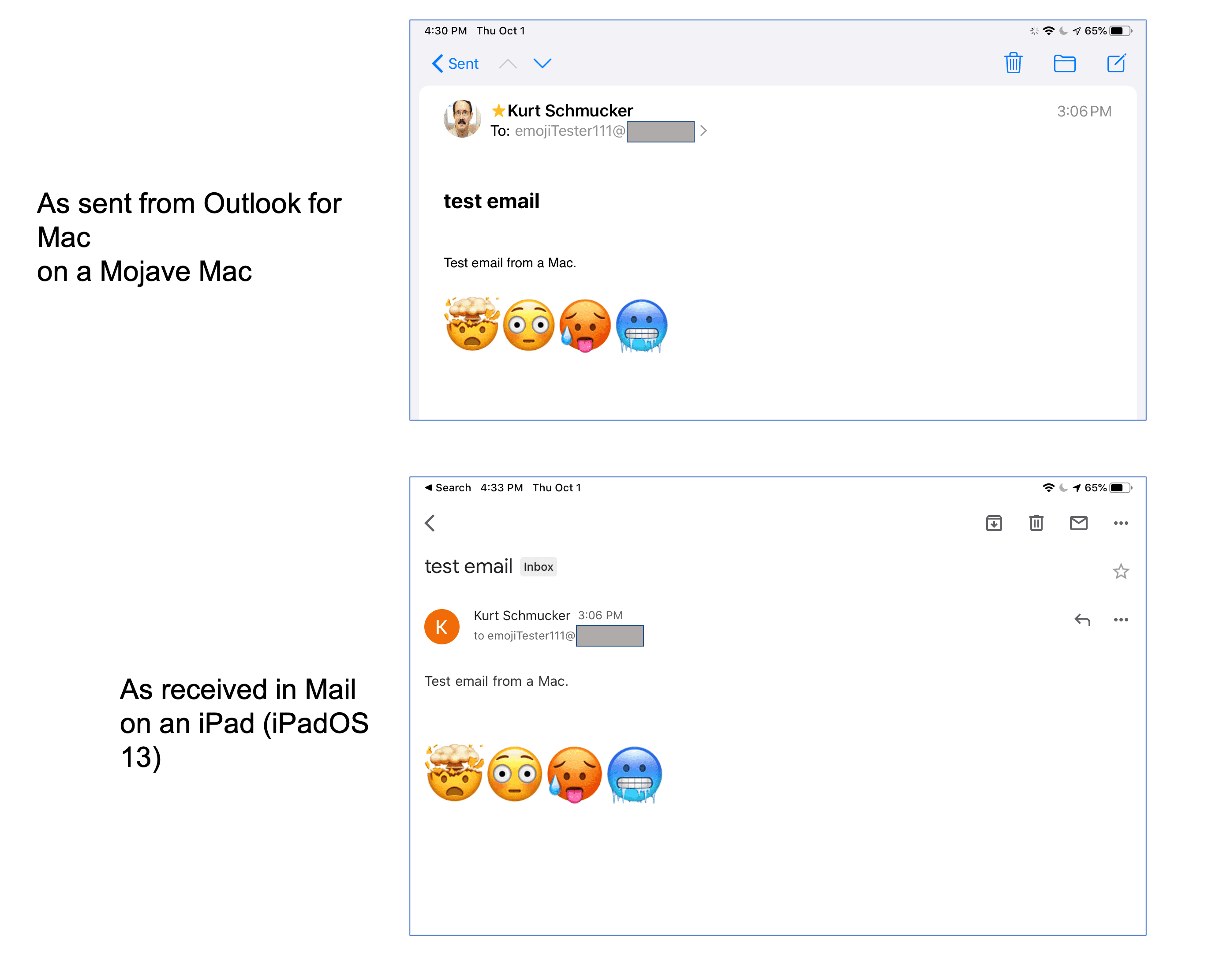
Case 2: Conceptually identical, but artistically distinct

- Judgement: Ideas are the same, but graphically quite different (See Figure 2.).
- Frequency: Common, when crossing manufacturers (e.g., typed on Apple product, but viewed on Microsoft product).
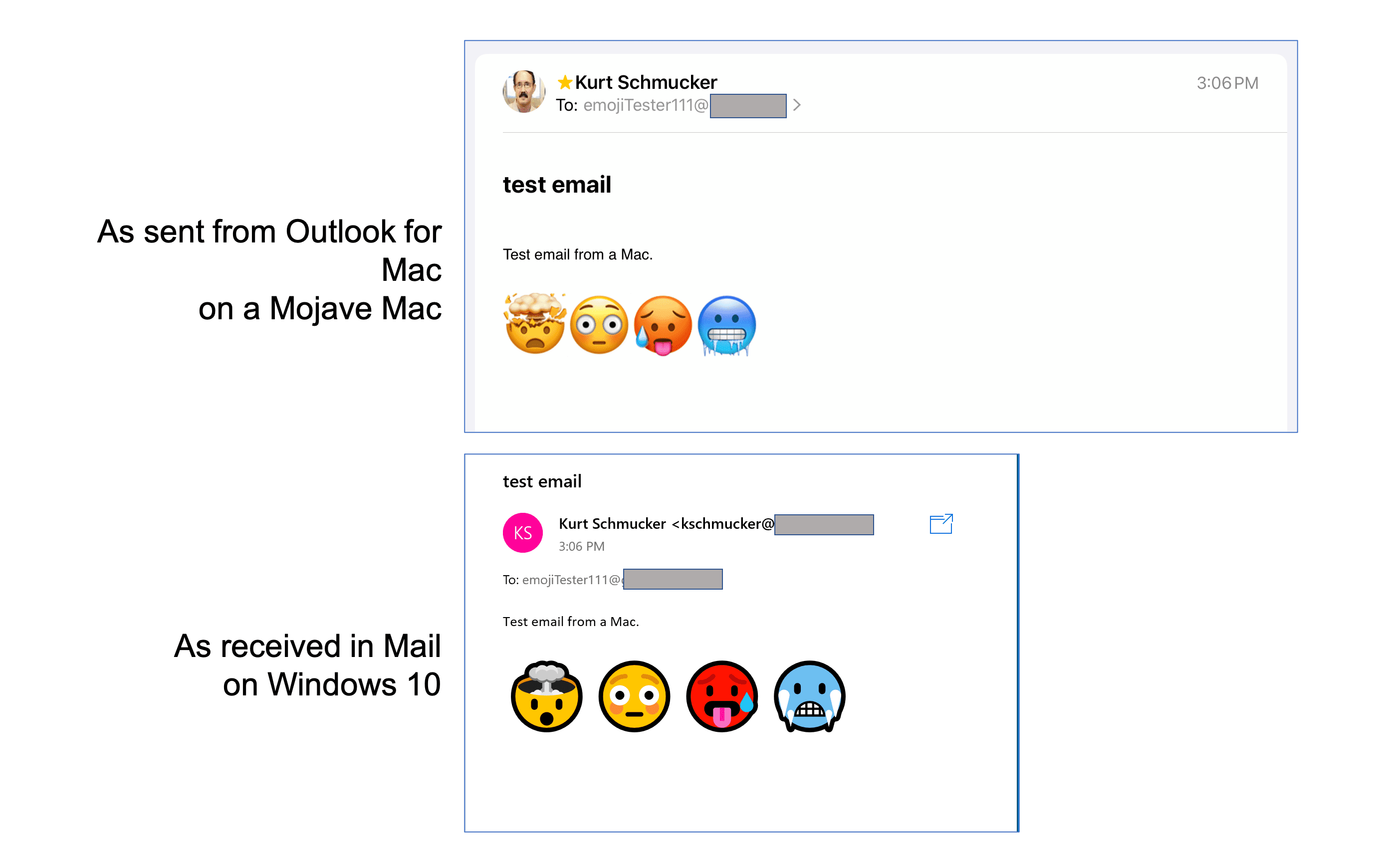
Case 3: Missing
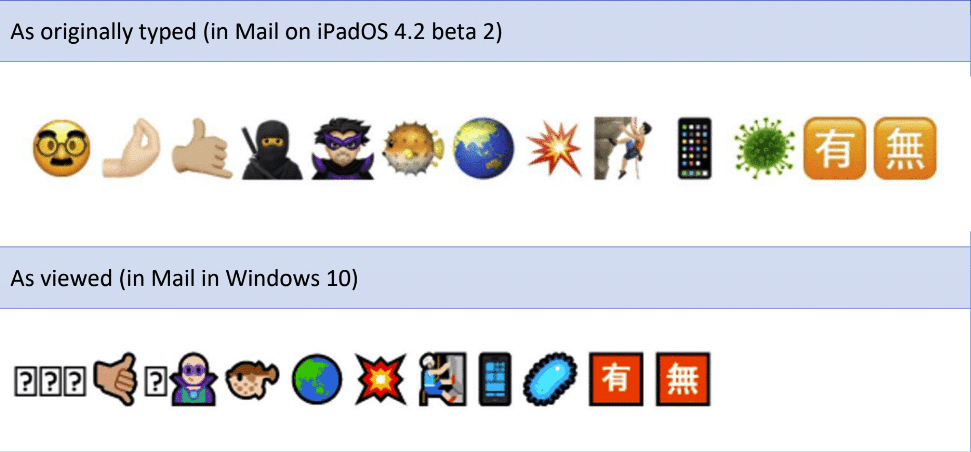
- Judgement: Note the missing emojis as shown with ? (See Figure 3.)
- Frequency: Common, when crossing manufacturer boundaries (e.g., typed on Apple product, but viewed on Microsoft product), or when crossing versions (typed on iOS 4.2, but viewed on iOS 3).
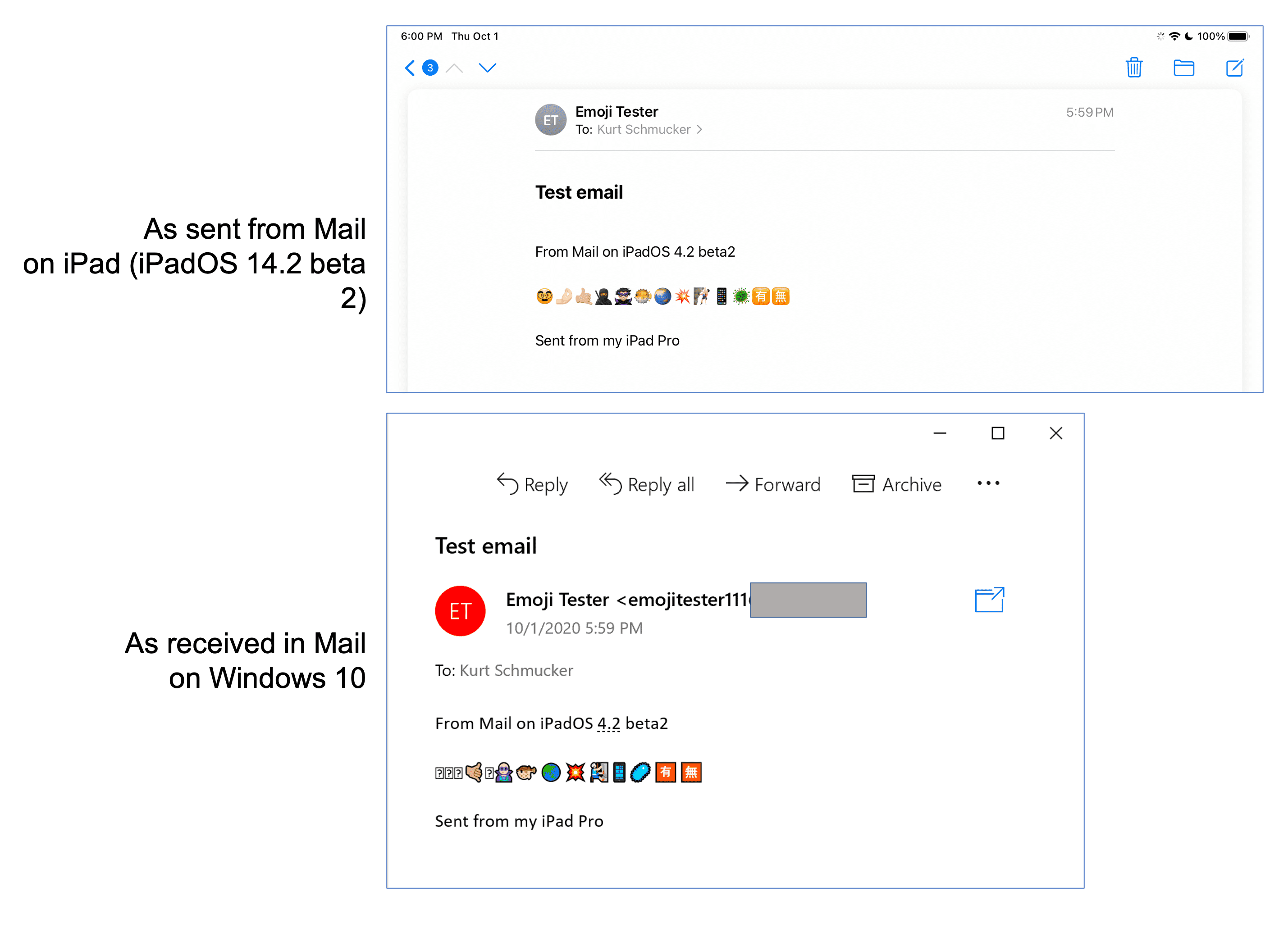
Case 4: Missing in portions of an application
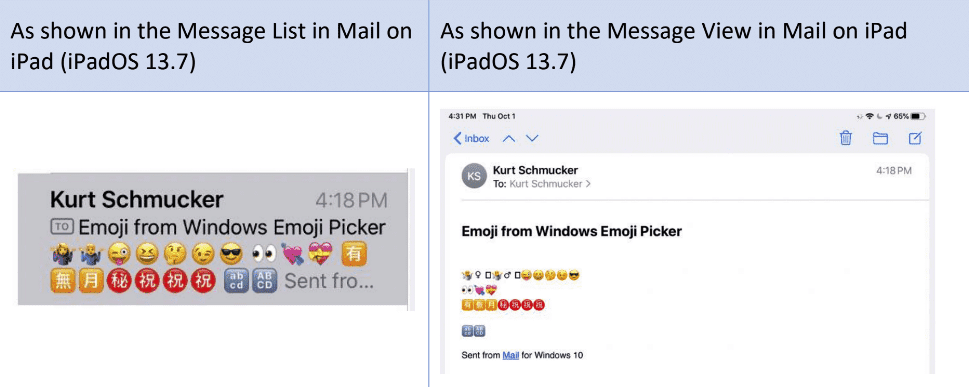
- Judgement: Note the missing emojis in the Message View denoted by small empty rectangles (See Figure 4).
- Frequency: Rare. This case really surprised me.

- When different portions of the same application render the emojis differently. Clearly the emojis are available to the app, since they are shown in one view, but not shown in another view. Also note that some of the emojis are different in the two views. This may just be a bug in the Mail app on the iPad.
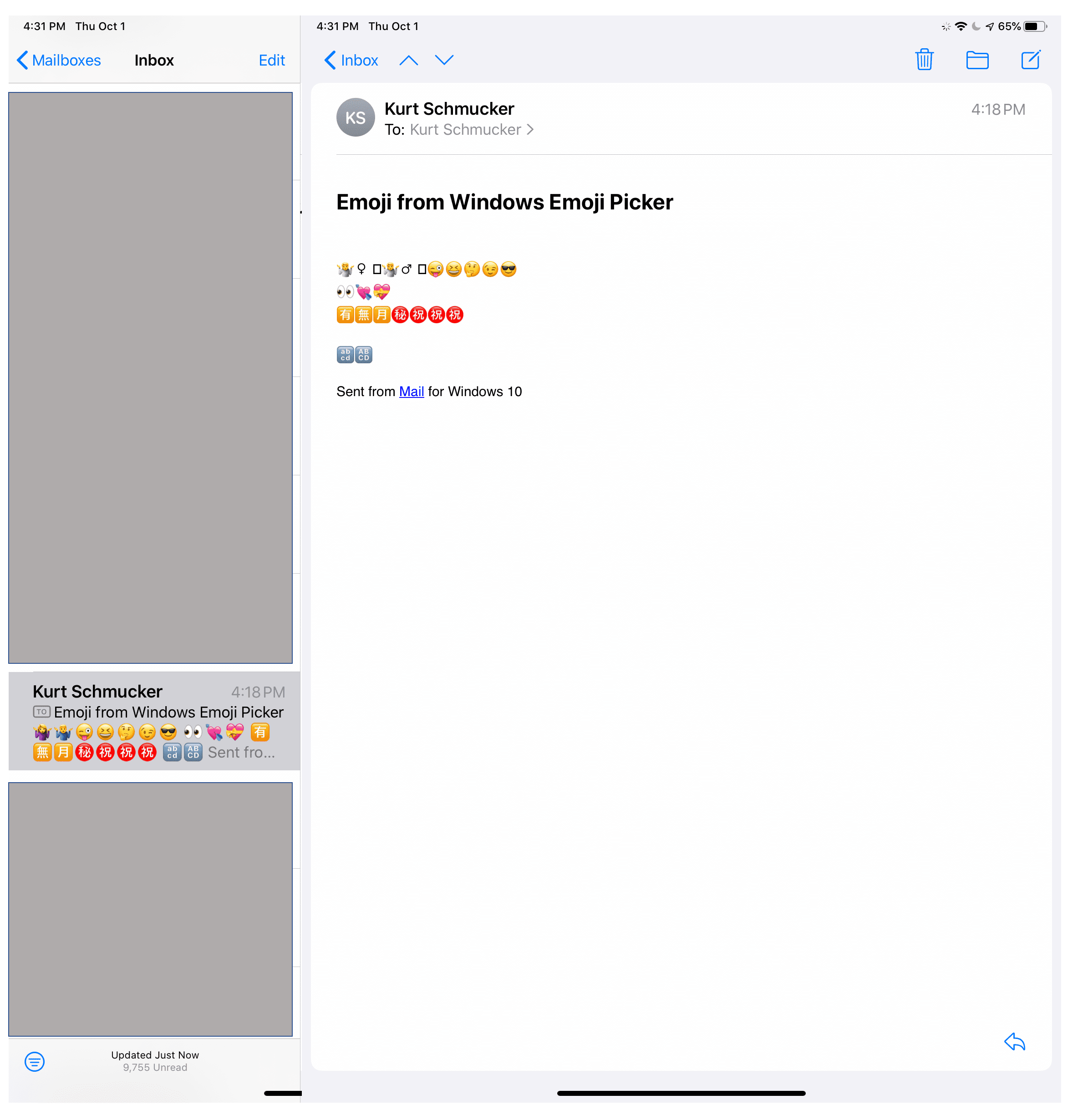
Have you observed any emoji differences that are not one of the cases I describe above? If so, let me know in the comments.
Download a free trial of Parallels Desktop for Mac.

